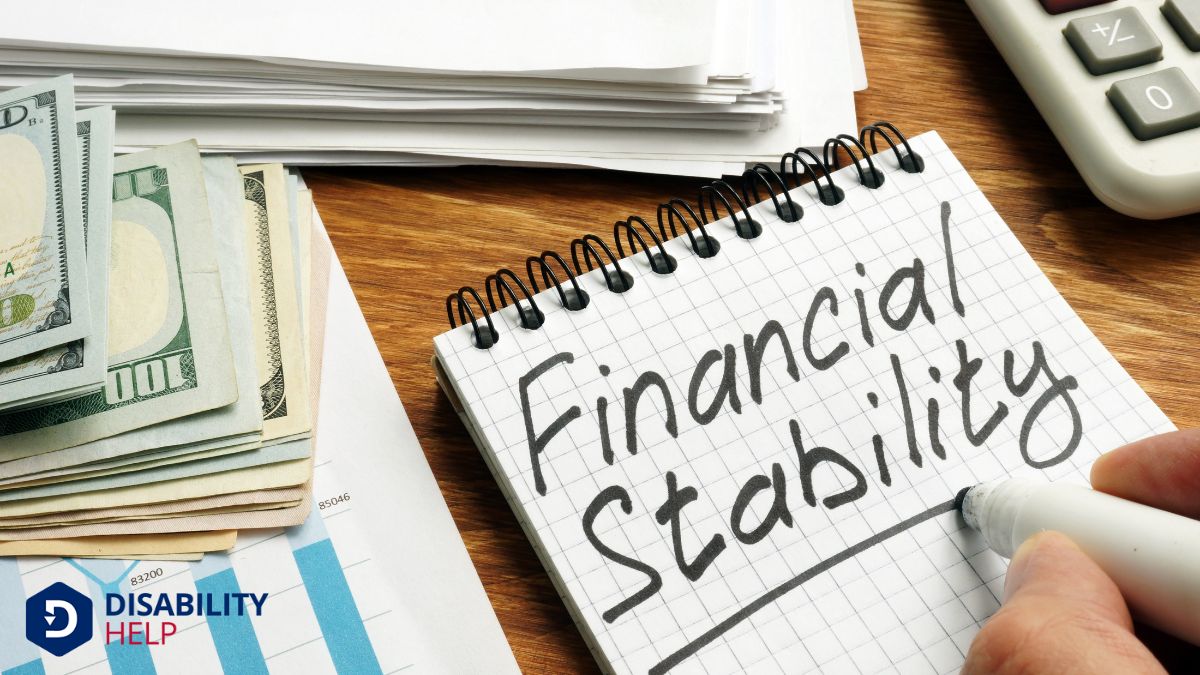Short-term disability coverage usually ranges from a few weeks to six months, depending on our employers and specific conditions. Most policies cover a portion of our salary during recovery from temporary medical issues. Each plan and employer may have unique eligibility criteria and coverage durations. State regulations can also influence these policies. We should understand our specific terms, including waiting periods and covered conditions, to guarantee financial stability. Stay with us for more insights on this topic.
Key Takeaways
- Short-term disability coverage typically lasts from a few weeks to six months.
- Coverage duration depends on the medical condition and individual recovery time.
- Employer policies significantly affect the length of short-term disability benefitsFinancial assistance provided to individuals who are unable to work due to a disability, such as Soc....
- State regulations may mandate specific minimum coverage durations for short-term disability.
- Understanding both employer and state guidelines is crucial for determining coverage duration.
Understanding Short-Term Disability Coverage

Short-term disability coverage is an essential safety net that provides financial support when we're unable to work due to temporary medical conditions. It helps us maintain our financial stability during those times when we can't earn our regular income.
Understanding this coverage is vital because it directly impacts our ability to meet daily financial obligations. Typically, these policies cover a percentage of our salary, easing the burden while we focus on recovery.
We must be aware of our specific policy’s terms, like the waiting period before benefits kick in and the conditions it covers. By familiarizing ourselves with these details, we can better navigate our options and guarantee we've the necessary support when unexpected health issues arise.
Standard Duration of Short-Term Disability Policies
Typically, short-term disability policies offer coverage durations ranging from a few weeks to six months, depending on the specific policy terms.
As we explore these policies, it’s essential to understand that the duration is often determined by how long it takes for an individual to recover or shift back to work. We should keep in mind that a policy's duration can greatly impact financial stability during a period of recovery.
Let's consider why this range exists. It’s designed to accommodate various medical conditions and individual recovery times. A sprained ankle might need only a few weeks, while recovering from surgery could require several months.
Employer-Specific Policy Variations
When we look at employer-specific policies, we notice that the coverage length can vary considerably from one company to another.
Employers also set unique eligibility criteria, which means our benefits might differ based on where we work.
It's important to understand these variations so we can better plan for potential short-term disability needs.
Coverage Length Differences
While traversing the landscape of short-term disability coverage, we frequently encounter differences in coverage length that hinge on employer-specific policies.
These variations can greatly impact how we plan for unforeseen circumstances. Some employers might offer coverage for as little as a few weeks, while others extend it up to six months.
It’s essential that we comprehend our employer’s specific policy, as it directly affects our financial security during recovery. Companies determine their coverage lengths based on factors like industry standards, budget constraints, and employee needs.
As we navigate this complex terrain, we should review our employee handbook or speak with HR to clarify our specific coverage. Knowing these details helps us prepare appropriately for life’s unexpected challenges.
Eligibility Criteria Variability
Understanding the eligibility criteria for short-term disability coverage requires us to explore the nuances of employer-specific policy variations. Each employer often tailors their policy depending on factors like industry standards, company size, and employee needs. This means what qualifies for coverage at one company mightn't at another.
Some employers might require a certain length of service before eligibility, while others might be more lenient. Additionally, the definition of a qualifying disability can vary, impacting who receives benefits.
It's essential for us, as employees, to review our specific employer's policy to understand these criteria fully. By doing so, we can guarantee we meet all necessary requirements and are prepared in the event we need to access short-term disability benefits.
The Role of State Regulations
State regulations play an essential role in determining short-term disability coverage, and we must understand how these rules vary.
Each state establishes its own guidelines, affecting the coverage rules and the duration of benefits.
As we explore these variations, we'll see how they impact the typical benefit periods for short-term disability.
State-Specific Coverage Rules
Maneuvering through state-specific coverage rules for short-term disability can be complex, but it’s vital to understand the role of state regulations. Each state has unique requirements that determine how disability benefits are administered.
We must recognize that some states mandate employers to provide short-term disability insuranceInsurance that provides income replacement for a limited time when an employee is unable to work due..., while others don’t. In states like California, New York, and New Jersey, regulations require specific benefits and coverage periods, guaranteeing workers receive protection.
It’s important to be aware of these nuances because they directly influence coverage eligibility and benefit amounts. By familiarizing ourselves with our state’s specific rules, we can better navigate our options and guarantee we’re adequately covered.
Let’s be proactive and informed to make the most of our disability benefits.
Variability in Benefit Periods
Although short-term disability benefits can vary widely, state regulations play an essential role in defining the length of these benefit periods. We often find ourselves maneuvering a patchwork of state laws that greatly impact our coverage. Some states mandate a minimum period, while others set maximum limits, affecting how long we can rely on benefits during a disability.
It's important to understand that these regulations aren't uniform; they reflect each state's approach to supporting workers. For instance, states like California and New York have specific programs providing more extended coverage than others.
As we explore our options, we should consider both state requirements and our individual needs. By doing so, we can make informed decisions about our short-term disability plans and better prepare for unexpected situations.
Factors Affecting Coverage Length
When we consider the factors affecting the length of short-term disability coverage, it’s important to understand that several key elements come into play.
First, the nature and severity of the disability itself can influence duration. More severe conditions might require extended time off compared to less severe ones.
Additionally, employer policies play a vital role. Some companies offer longer coverage periods, while others might provide only the minimum required by law.
Our personal work history and tenure with the employer can also impact coverage length. Employees with longer service may receive extended benefits.
Finally, state regulations can affect coverage, as some states mandate specific minimum durations.
These factors collectively determine how long we can expect our short-term disability coverage to last.
The Process of Filing a Claim
Filing a short-term disability claim can seem intimidating, but understanding the process helps guarantee a smoother experience.
First, we ought to gather all necessary documents, like medical records and employer information, to support our claim. It’s essential to understand our policy specifics, so we're aware of what’s covered and any waiting period involved. We need to notify our employer promptly, as they’ll often provide necessary forms and guidance.
Next, we’ll complete the claim form, ensuring accuracy and completeness to avoid delays.
After submission, staying in touch with the insurance company is key, as they might need additional information. Let’s keep copies of everything for our records.
Transitioning From Short-Term to Long-Term Disability
As we navigate the complexities of short-term disability, it’s vital to prepare for a potential change to long-term disability if our situation requires it.
This shift can be intimidating, but understanding the process helps us manage it smoothly. Here’s what we need to take into account:
- Eligibility Criteria: Let's verify that we meet all the criteria for long-term disability, which often includes medical documentation and proof of continued disability.
- Application Process: We should familiarize ourselves with the application steps, including deadlines and necessary paperwork, to avoid delays.
- Coordination with Employers: It’s important to maintain open communication with our employers to guarantee seamless continuation of benefits and address any concerns.
- Financial Planning: We must assess our financial situation and adjust our plans accordingly to accommodate this change.
Maximizing Your Benefits
Maximizing our benefits requires a strategic approach to guarantee we get the most out of our short-term disability coverage.
First, let’s review the policy details. We should know the exact length of coverage, waiting periods, and percentage of income replacement. By understanding these elements, we can plan accordingly.
Next, it’s essential to keep open communication with our employer and insurance provider. Promptly submit all necessary documentation and updates about our condition, ensuring there are no delays in benefit processing.
Additionally, let’s explore any supplemental benefits or assistance programs available. These might offer extra support that complements our coverage.
Planning for Financial Stability

While managing short-term disability, securing financial stability should be a top priority. Understanding our options guarantees we're prepared for unexpected expenses.
Let's consider these steps:
- Assess Our Budget: We should review our current expenses and identify areas to cut back, guaranteeing we can sustain ourselves with reduced income.
- Explore Additional Income Sources: Look into part-time work or freelancing that won’t interfere with our recovery or violate disability terms.
- Utilize Savings: If we've set aside an emergency fund, now’s the time to use it wisely, focusing on essential costs.
- Consult Financial Advisors: Seeking professional guidance can help us navigate investments or debts during this period, guaranteeing long-term security.
Conclusion
In summary, understanding the nuances of short-term disability coverage empowers us to make informed decisions. While standard policies might offer coverage for a set period, employer specifics and state regulations can alter this duration. By familiarizing ourselves with the claims process and potential shift to long-term disability, we can better navigate our options. Let's maximize our benefits and guarantee financial stability by staying informed and proactive in managing our short-term disability coverage.






